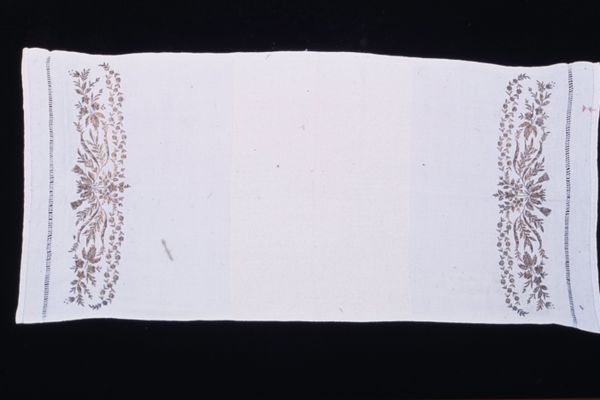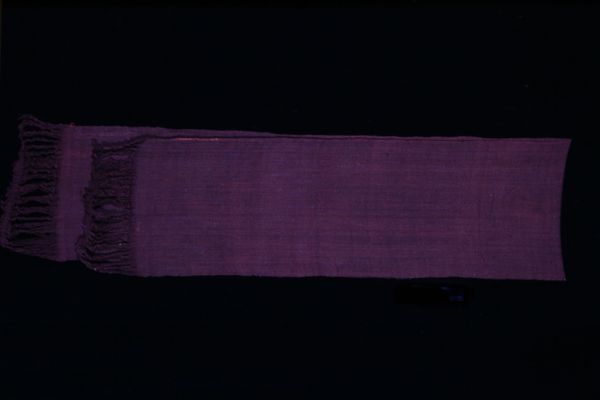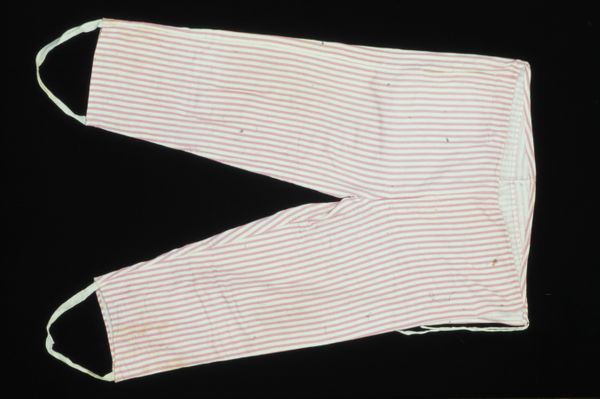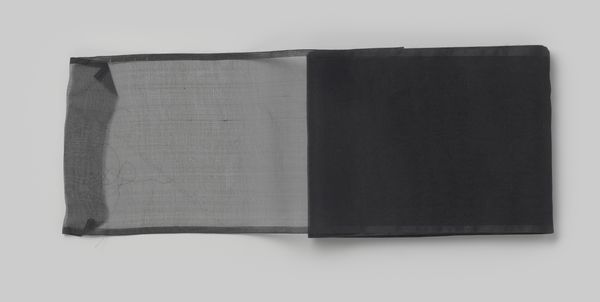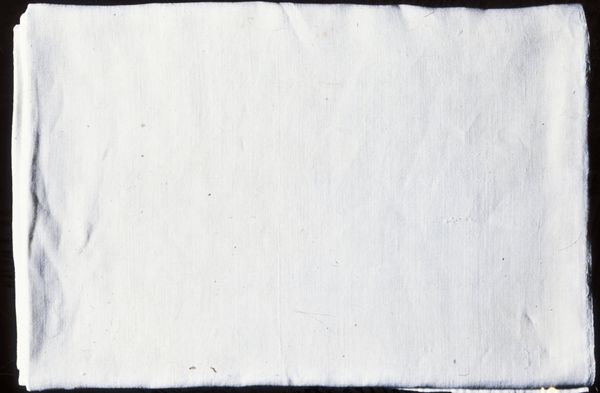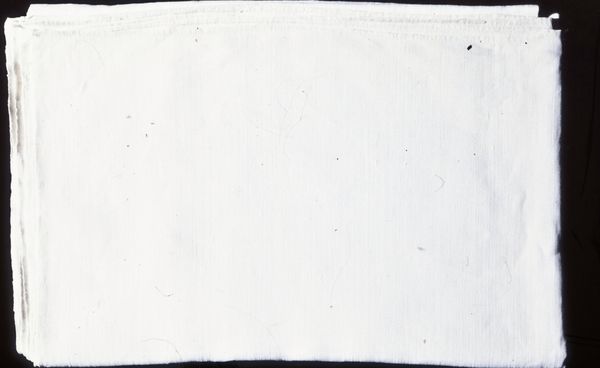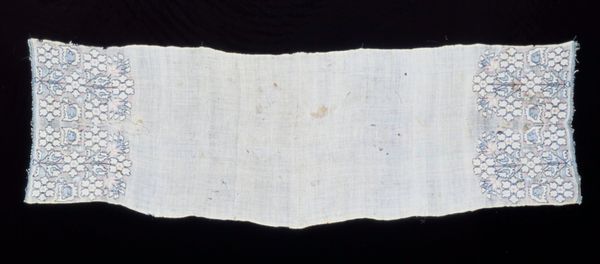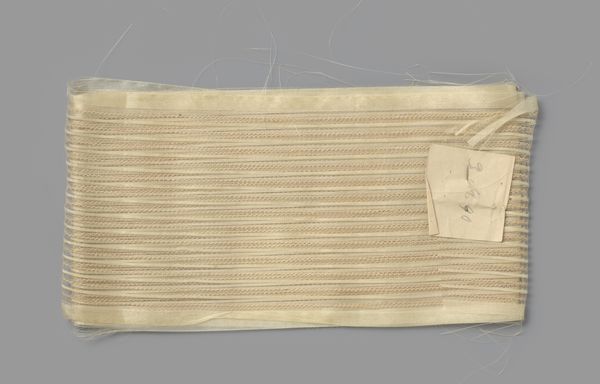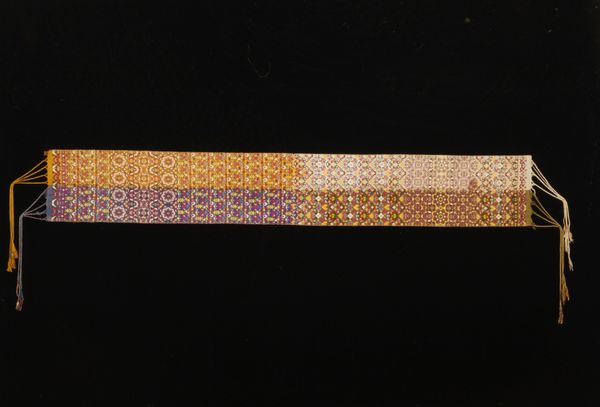
panel, weaving, textile, cotton
#
panel
#
sculpture
#
weaving
#
textile
#
geometric
#
cotton
Dimensions: 101 1/2 x 19 in. (257.81 x 48.26 cm)
Copyright: Public Domain
Curator: Let’s discuss this fascinating object identified as simply “Panel,” dating from the 18th to 19th century and residing here at the Minneapolis Institute of Art. What strikes you immediately? Editor: It evokes such a feeling of faded grandeur. The textile, with its subtle geometric pattern, feels like a fragment from a larger, possibly regal, whole. It makes me think of lost empires. Curator: The cotton panel itself is compelling, particularly when we consider the labor involved in its creation. Think of the process – cultivation, spinning, dyeing, weaving. The human effort woven directly into the fabric. And look closer; it's not just cotton but a complex weaving. What were the conditions like for those who produced this textile? Was it made for trade, for personal use, or perhaps a religious context? These considerations root us in the real, lived experience of making. Editor: I see your point about the labor, but my eye keeps returning to those repeating geometric patterns. It seems deceptively simple, but within that simple framework, you can almost perceive other shapes and echoes of traditional designs from different cultures, and then a quiet elegance begins to emerge from what first appears basic. Is there a connection with the broader symbolism found within Islamic or South Asian weaving traditions, perhaps referencing cosmos or divine order? Curator: Perhaps. But to truly grasp its symbolism, we’d need to know the specific cultural and social milieu in which this "Panel" was produced and utilized. Without this context, our interpretations remain somewhat speculative. However, studying the chemical composition of the dyes and weave can bring us a step closer to understanding where this piece originated from, how valued it was and traded across time, offering a direct line to the hands that created it. Editor: Agreed, pinpointing its cultural origins would definitely anchor its symbolic value. But its ambiguity also intrigues me – how it seems to hint at forgotten stories through recurring visual themes that resonate regardless of their original intent. It's an echo, preserved in thread. Curator: For me, its strength resides in being a tangible object shaped by the very tangible forces of labor, commerce, and textile production, regardless of symbolic notions, this fabric reminds us of human production. Editor: It’s remarkable how the conversation oscillates between your view of art making and my impulse to read embedded symbolic values into visual objects across the boundaries of both cultures and centuries. Curator: Indeed, a potent blend, and in doing so, it ensures this piece, however modestly labelled, never truly becomes 'anonymous.'
Comments
No comments
Be the first to comment and join the conversation on the ultimate creative platform.

